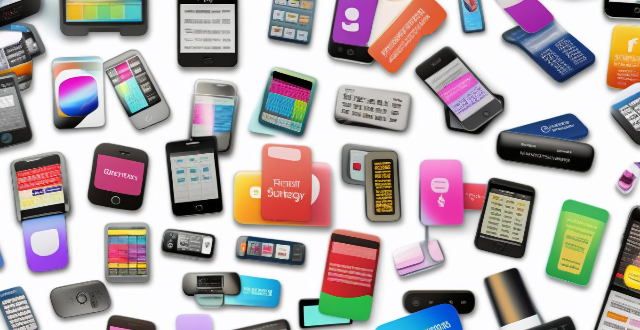The article discusses the evolution of phone screens, highlighting various types available in the market. It covers LCD (Liquid Crystal Display), AMOLED (Active Matrix Organic Light Emitting Diode), IPS (In-Plane Switching), Super AMOLED (Super Active Matrix Organic Light Emitting Diode), and Retina Display technologies. Each type has its pros and cons, such as affordability, energy efficiency, color accuracy, viewing angles, and resolution. When choosing a phone screen, one should consider factors like budget, desired features, and intended use to find the best option.

Different Types of Phone Screens Available in the Market
Phone screens have evolved significantly over the years, offering various features and technologies to enhance the user experience. Here are some of the different types of phone screens available in the market:
1. LCD (Liquid Crystal Display)
LCD screens are one of the most common types of phone screens. They consist of a layer of liquid crystal material sandwiched between two layers of polarized glass. The image is created by passing light through the liquid crystal material and controlling the amount of light that passes through each pixel.
Pros:
* Affordable
* Energy-efficient
* Good for general use
Cons:
* Limited viewing angles
* Not as vibrant or bright as other display technologies
2. AMOLED (Active Matrix Organic Light Emitting Diode)
AMOLED screens use organic light-emitting diodes to produce light for each individual pixel. This technology allows for deeper blacks, vibrant colors, and better contrast ratios compared to LCD screens.
Pros:
* Bright and vibrant colors
* Deeper blacks and better contrast
* Thinner and lighter than LCD screens
Cons:
* More expensive than LCD screens
* May suffer from burn-in issues if used improperly
3. IPS (In-Plane Switching)
IPS displays are a type of LCD screen that offers improved viewing angles and color accuracy. They work by arranging the liquid crystals in a unique way, allowing for better off-axis viewing without sacrificing color quality.
Pros:
* Wider viewing angles
* Better color accuracy and consistency
* Suitable for professional photo and video editing
Cons:
* Slightly more expensive than standard LCD screens
* Not as energy-efficient as some other display technologies
4. Super AMOLED (Super Active Matrix Organic Light Emitting Diode)
Super AMOLED screens are an enhancement over regular AMOLED screens, offering even better color reproduction and higher resolution. They also feature a touchscreen layer integrated into the display, resulting in a thinner and more responsive screen.
Pros:
* Exceptional color accuracy and vibrancy
* Higher resolution than regular AMOLED screens
* Integrated touchscreen layer for a thinner profile
Cons:
* More expensive than regular AMOLED screens
* Still susceptible to burn-in issues if not used properly
5. Retina Display
Retina displays were introduced by Apple and refer to a class of high-resolution screens that have a pixel density high enough to render individual pixels invisible to the naked eye at a normal viewing distance. This results in extremely sharp images and text.
Pros:
* Extremely high resolution and sharpness
* Invisible pixels at typical viewing distances
* Often combined with advanced display technologies like IPS or AMOLED for optimal performance
Cons:
* Pricier than lower-resolution screens
* May not offer significant benefits over slightly lower-resolution displays in terms of everyday use
In conclusion, there are several types of phone screens available in the market, each with its own advantages and disadvantages. When choosing a phone screen, consider factors such as budget, desired features, and intended use to find the best option for your needs.